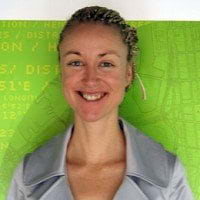ArcGIS Urban provides everything planners need to devise effective solutions to urban problems—from creating plans to proposing zoning changes. To help you get started, we’ve created a series of short videos to teach you common workflows in ArcGIS Urban. For more in-depth tutorials, check out our ArcGIS Urban Essential Skills video tutorials.
Create a Land Use Plan
Land use is the foundation of an urban plan. It describes how a city currently uses its land and proposes changes to guide future development. Land use also provides the framework for other components of a plan, including housing, environmental resources, and infrastructure. For example, a land use plan guides what land is available for apartments or single-family homes, or where open space is preserved to protect environmental resources. For future land use planning, it answers questions like, what mix of land uses will the community need in the future? And, where should those land uses be located?
ArcGIS Urban supports land use plans based on existing and future land use boundaries.

Skyplanes
A skyplane increases light and air at street level in medium and high-density districts, protecting viewsheds within dense street corridors.
Technically a skyplane is a virtual sloping plane that begins at a specified height above street level and rises inward over the parcel at a ratio of vertical distance to horizontal distance.
Learn how to use ArcGIS Urban to create skyplanes below.

Interactive Line of Sight Analysis
Line of sight analysis determines what you see from a particular location in the landscape, and also from where in the surroundings your site can be seen.
Potential uses in community planning and zoning include evaluating the visual impacts of the existing and proposed urban form before making decisions.
Learn how to evaluate views from a new building below!

Public Feedback
Providing a variety of methods to solicit feedback on proposed projects and developments helps ensure all voices are heard. For those who can’t attend a City Council meeting for example, the ability to share your view online is invaluable. ArcGIS Urban encourages online civic engagement to enable hard-to-reach demographic groups to participate.
ArcGIS Urban has the ability for citizens to provide place-based comments on individual scenarios within a Plan or Project during the commenting period. Furthermore, you can configure different feedback categories to enable focused feedback and efficient analysis of results.

New Capacity Metrics
Measuring the impact of plans is on the surrounding urban environment is critical. To that end ArcGIS Urban includes a variety of new capacity metrics. In a zoning or land use plan the capacity metrics are used to compare design scenarios. Display them in the capacity dashboard and export them to Excel for further analysis.
In Urban zones have building types, and those building types have space uses inside of them. The space uses drive the capacity metrics. For example, the larger the retail space, the more jobs you have.
Population, Jobs, and Households drive secondary capacity metrics like CO2 Emissions or the number of vehicle trips. For example, vehicle trips are calculated based of the total number of population and jobs created by each space use.
Calculating capacity metrics is available on both plans and projects. The list includes primary and secondary metrics.
Primary capacity metrics
- Population
- Households
- Jobs
Secondary capacity metrics
- Parking Spots
- Required Parking Spots
- Daily Trips (walking – bike – private motorized vehicle – public transport)
- Energy Use
- CO2 Emissions
- Internal Water Use
- External Water Use
- Waste Water
- Solid Waste
Where does this information come from?
For the USA template we have created plausible defaults based on research. For example USA EPA Standards for greenhouse gas emissions and water consumption, and the Residential Energy Consumption Survey.
For more information see the help documentation.

Project Editing
Edit projects directly in ArcGIS Urban! Projects now have an editing experience that allows you to sketch buildings, place trees, vehicles, street furniture, and ground visualizations. Additionally, you can add design context to projects and scenarios, such as a site plan layer to trace the building footprints or mock-up the proposed location of trees and other assets that may be hard to understand in 2D proposals.

Article Discussion: